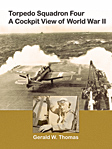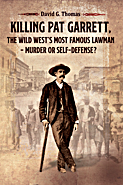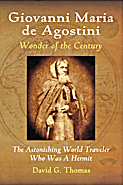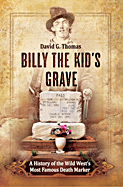|
|
||||||||||||||||||||||||
 |
||||||||||||||||||||||||
|
|
||||||||||||||||||||||||
|
||||||||||||||||||||||||
|
|
||||||||||||||||||||||||
 |
||||||||||||||||||||||||
 |
||||||||||||||||||||||||
 |
||||||||||||||||||||||||
|
|
||||||||||||||||||||||||
|
|||||||||||||||
|
Aboard the Ranger and Beyond |
|||||||||||||||
|
By Tom Moore, VS-41, VB-41, VB-4 |
|||||||||||||||
|
Here are my remembrances of 58 or 59 years ago. The USS Ranger was commissioned June 4, 1934 and was the first air carrier built as such from the keel up. She was sold for scrap 31 January 1947. The USS Saratoga and USS Lexington were converted cruisers commissioned in 1927, but were larger than the Ranger, which was launched at 16,500 tons. Later in the war she was deemed too light and too lightly armored and slow to take a place in the Fast Carrier (Essex class 25,000 tons) Task Forces in the Pacific. "Sara" and "Lex" were more formidable and stayed in the Pacific when war came. The Ranger was easily identifiable by her 3 stacks on port and 3 stacks on starboard, which folded down during flight operations. I went aboard Ranger on December 1, 1941 fresh out of Aviation Machinist Mate School and was assigned to Scouting Squadron 41. During the first week she was training squadrons off Norfolk and I had occasion to fly rear seat in an SB2U3 Vaught Vindicator which had fabric wings and was being used as a dive bomber by VS-41 and VS-42. Ranger went in and tied up at Pier 7 Norfolk and began offloading the obsolete SB2Us and bringing aboard the new SBDs. At that time Ranger's Air Group 4 consisted of 18 SBDs of VS-41, 18 SBDs of VS-42, 18 F4Fs of VF-41, 18 TBDs of VT-41, and one JRF Grumman Duck utility seaplane. On December 7, 1941 in the early afternoon I was at a movie in town when the lights came on and all personnel were ordered to return to their ships and stations. Pearl Harbor had been attacked and there were reports of 40 German bombers en route to bomb New York City (which was later found to be a false report). Ranger put out to sea immediately and her Air Group flew aboard. She went U-boat hunting in the Caribbean, and subsequently to the North Atlantic on convoy duty. On December 10th, I celebrated my 18th birthday. In April 1942, Ranger was at Quonset Point, RI where we loaded 68 P40s and their kid Army pilots. The Air Group stayed at Quonset, but I went with the ship because she kept 4 SBDs aboard. We took the P40s to Trinidad to pick up a tanker to be used in the long Atlantic crossing. While off the coast of Accra, in heavy weather, the P40s all flew off safely and flew on to Karachi, India for duty in the CBI Theater. Although a long trip for them, it was deemed better than sending the P40s piecemeal in boxes by ship across the Pacific as before. Ranger returned, picked up her Air Group, and went to Bermuda for gunnery and bombing training. VS-41 was the "Tophatters," which became VB-41 and later VB-4. The pilots at this time were:
Those marked with an asterisk (*) were later killed in action, at least those which I heard of. Leaving Bermuda on November 1942, Ranger rendezvoused with the largest fleet of ships in history up to that time. Stretching 25 miles in each direction, the North Atlantic Invasion was under way. The Vichy Free French were the question mark, because it was unknown whose side they were going to fight on. French submarines were leaving Casablanca, a cruiser and 3 destroyers joined the enemy, the huge shore batteries at El Hank were firing on the landing barges, and the French battleship Jean Bart was throwing 15-inch shells, so the order came to "Play Ball" (which meant to attack) and we launched the Air Group. Ranger was the flagship of 5 carriers (4 were "half-decker" CVEs and us a CV). Rear Admiral McWhorter was commander of the carriers. Rear Admiral Calvin Durgin was Skipper of Ranger. VF-41 attacked the shore batteries at Fedala and Port Lyautey. French anti-aircraft guns were inflicting damage to our aircraft. The divebombers and torpedo planes were using 500-pound bombs on the French emplacements, and wiped them out. Ranger set a record (all-time Navy) that day for launchings and landings in one day under the constant threat of a close-in U-boat pack. We faced American-built P36s flown by the French, who were harassing the landing troops. Casualties and loss of aircraft for VF-41 were low. The second day our fighters intercepted 40 German bombers, shot down one, and the rest fled. Another flight ran into 16 Dewoitine 520s. About 9 of these were shot down. All this time our dive bombers were dropping 1,000-pound bombs on the battleship Jean Bart, and put her completely out of action. Our fighters (from the 5 carriers) shot down 26 enemy planes and destroyed 100 on the ground. We dodged several torpedoes fired by a combination of German U-boats and French subs. Standing on the aft flight deck, I watched 2 torpedoes heading straight for Ranger. We did a violent turn and I watched them running less than 50 yards off the stern and heading for the USS Indianapolis, a heavy cruiser in our screen. They went straight into her port sides amidships, but never exploded. Either they were duds or they went under her. The landings were a success. We then returned to convoy duty in the North Atlantic. Early in 1943, we were off Newfoundland and went to join the Queen Mary, which was out of New York and loaded with troops. Ranger was capable of 30 knots (which rattled her real good). Normally a convoy traveled only as fast as her slowest ship, so normal was 8 or 9 knots, and they zigzagged to confuse the U-boats. The Queen Mary was so fast that she did not need to zigzag and ran a straight course. We (at 30 knots) were unable to keep up with her and she was quickly long gone over the horizon to England. We calculated that she had to be doing 45 knots. She was known as the "Grey Ghost" and kept to herself throughout the war, delivering troops without the benefit of escort ships. In the spring of 1943, I was sent by the squadron to flight school to enter the V5 program. I was transferred in St Johns, Newfoundland to a tanker going to New York. I was given 30 days leave before starting for Flight Training and my home was on Staten Island. The day I arrived home, all the NY newspapers had front page pictures of Ranger and articles saying she was sunk in the North Atlantic by a U-boat. The NY Times also had a front page picture of Adolph Hitler pinning a medal on U-boat Commander Otto Von Bulow for his successful sinking of the carrier. I knew this was baloney, because in the few days I was off the Ranger, there was no way that a sub could get all the way back to Germany (at what, 10 knots?) and for the U-boat skipper to make his way to Hitler for the award. After I left Ranger (and she was supposedly sunk), she went on 6 months later to make a raid on German shipping in Bodo, Norway. I understand that Ranger was operating with a British task force there and sank 6 enemy vessels, with the loss of 3 Ranger planes. Later she went to the Pacific and was used for training and qualifying pilots. I hope this was not too lengthy. Ranger never got "much ink" during WWII, but those are some excerpts of what she did, and I was very proud to have served on her. Another Side to Aviation 1941 to 2000 You (AirGroup4.Com) have asked for some biographical information on me. In my 60 years in aviation, I know of nothing that I did that would qualify me to receive any accolades, but in all humility I will answer you. To me, my life was exciting, but to a reader, "I donno." So, rather than be rude and not answer you, lets call this "Another Side to Aviation 1941 to 2000." I was born December 10, 1923 in Staten Island, NY. Upon graduation from Curtis HS in January 1941, I tried to enlist in the Navy, but was rejected for "hammer toes." My chum, Roland Knobel, passed and went to boot camp, and then went on to become an admiral. I had my toes surgically repaired and while waiting for them to heal, took ground school at Wagner College for my private license. In May 1941, I returned for another physical and passed without ever having to take off my shoes and socks (ironic?). I entered on what was called a "kiddy cruise," under which the Navy took 17 year olds who would be released at 21. I went through boot camp at Newport, RI and AMM school in Jacksonville, FL. I have already covered what happened up until I entered V5. I spent 15 months in V5 pilot training, first in Flight Preparatory school at the University of Washington and St Olaf College in Minnesota, then War Training School in LeMars, IA flying light planes for 3 months, then Pre-Flight at Iowa City, then Primary in N2S Stearmans at Wold Chamberlain Field in Minneapolis in dead winter, then on to Intermediate in SNJs at Corpus Christi (Kingsville), and was almost finished when I was transferred to Navigation School at Clinton, OK. I was commissioned as an Ensign and received what is known today as NFO Wings, but were then called Navigator Wings. I was assigned to NAS Anacostia, DC with the Naval Air Transport Service (NATS). In February 1946, I was honorably discharged. I flew as Third Officer on DC4s with Trans Caribbean Airways, flying from Newark, NJ to San Juan, PR, and on to Rome. That was exciting because we always managed to lose an engine on takeoff out of San Juan and our station agent always had us overloaded because a Senator in New York had devised a way to get cheap Puerto Rican labor to pick tomatoes in New Jersey, and after the crops were picked, turning those poor souls loose in NY City. They had no means of support and that is what started the Puerto Rican population explosion in NYC during the late 40s. One day, our whole flight crew resigned en masse when we arrived in Newark. We were tired of risking our lives and being part of this miserable trade flying those poor souls with only the clothes on their backs and a sack lunch. Talk about the slave trade! I then became a ground pounder and helped open up an aircraft engine overhaul plant (Pacific Airmotive) in Linden, NJ. I was raising 3 children and attended Rutgers University for 7 years of night school. I set up a propeller overhaul plant (for PAC) and we overhauled all the 23E50 props for the DC4s taking part in the Berlin Airlift. During this time, I went into the Naval Air Reserve (weekend warriors) with FASRON 835 Flying PBYs out of Floyd Bennett Field, NY. We had a Navy fighter squadron, a Marine squadron, and an Army AF squadron across the field. They were all activated for the Korean War, except us! We were needed to keep NY secure and to fly up to Maine for lobsters and down to Jax for weekends on the beach. Tough duty! I was a Lieutenant and squadron Technical Training Officer. Meanwhile, my brother-in-law, who had been shot down in a B17 on his first mission in Europe and spent 27 months in a POW camp, had joined the Air Force Reserve (at my insistence) across the field and was activated 2 weeks later. While with PAC, I traveled around the country and met some very interesting aviation people, including my friend Roscoe Turner in Cleveland. Roscoe was the typical Air Racer, with the leather jacket, white silk scarf, leather Puttees, and handle bar moustache, and he really had a lion that flew with him. The lion would lay in his office and act just like a pet dog. In 1954, a strike closed PAC Linden and I went to work for Charlie Babb, who owned an aircraft surplus company in Newark. Ed Lund ran the company for Mr. Babb and through them I was privileged to know Jacqueline Cochran, who was a great aviator in her own right, but made sure that we all knew it. Charlie Babb was a hard worker and had bought up huge surplus inventories after WWII. He never took a day off. He sold the company for $15,000,000 (a huge sum in those days) and said, "now I'm going fishing." A few days later he dropped dead. The PAC engine overhaul facility in Linden remained closed from the strike, but inside the plant (250,000 square feet) remained unfinished R985, 1830, 2000, 2800, 4360, 1820, and British Gypsy Queen engines, all belonging to airlines, foreign carriers, and corporate operators. I talked the new Babb owners into buying that facility and became the Production Manager when they did. David A. Thomas was president with home offices in Phoenix. In 1956, I was asked by Curtiss Wright to help them open up a new engine overhaul facility in North Hollywood, CA. So I went West as their Production Control Manager and later Director of Sales. Our main customer was The Flying Tiger Line, which was operating some 14 new Constellations and we overhauled their R3350 engines. During this time I became good friends with Mr. Ed Daly, president of World Airways, and Kirk Kerkorian, who was starting up Trans International Airlines. Some of my time was spent in trying to collect money from these people. Kirk, of course, went on to become one of the wealthiest people in America, owning MGM and half of Las Vegas, but you could always trust him at his word when he didn't have a dime. Curtiss Wright closed up the North Hollywood facility in 1962 because the jets had taken over and their old fashioned philosophy did not keep up with P&W and GE, etc. Rather than return to New Jersey, I stepped into the surplus business with Air Parts in Burbank, which was owned by Michael Balwan. Mike had a PhD in finance from Harvard and was selected to head up a Congressional Investigation Committee on War Surplus (specifically aircraft parts). Nat DuMont owned DuMont Aviation, which specialized in hardware (nuts and bolts). After WWII, Nat bought up all the hardware which had been left over by the military and was concentrated in Mira Loma, CA. He bought a 250,000 square foot winery, which was located across the street from the Mira Loma base. He moved all the hardware into the winery. Shortly thereafter, Korea broke out and he sold it back to the military, lock, stock, and barrel. Nat owned Air Parts. Balwans committee was assigned to investigate DuMont. Shortly thereafter, Mike left the investigating committee and was given the presidency of Air Parts. Having no background in aviation per se, he hired me to run it. At the time, aircraft reciprocating engine parts were being bought up on the military surplus sales market and people were making huge profits selling to the airlines and overhaul shops. However, the surplus guys were not knowledgeable about jet engine parts yet. There were tons of brand new jet engine parts going up for sale listed as scrap at the Naval Air Stations in Alameda, mostly North Island San Diego. Mike had no money, nor did I, so we went to Nat DuMont and borrowed $50,000. I bid on (and won) all the jet engine parts at North Island. We loaded them in 2 railroad boxcars and took them to the winery in Mira Loma. I went to SNECMA in France and we sold all those parts for millions in a very short time. There was nothing illegal about all of this. Some of it we sold back to the military in San Antonio, and even back to Alameda. My Mother would have thought this reprehensible, but it was all above board and very legal. I later went to the Pentagon in Washington voluntarily and told the War Surplus Committee then convened how this was happening at all of the bases, and that they were actually running bulldozers over mounds of brand new jet engine parts. It was stopped that very day by orders to the bases while I sat with the Committee. From then on, the surplus sales program became more efficient. In 1971, I left Mike and went with a couple of buddies who owned Aircraft Cylinder Turbine. We overhauled and manufactured parts (mainly aircraft engine cylinder barrels) and sold parts all over the world. I was VP and General Manager. I negotiated contracts with Air France, Hindustan Aeronautics in Bangalore, India, the US Navy, Hong Kong Aircraft and Engineering, etc. During those wonderful years I was privileged to rub elbows and fly with some of the outstanding people in aviation. The 2 owners of this company were both excellent pilots. One, George Byard, owned his own Bonanza. The other, Bill Jones, began to buy up various war birds. We owned a Mig 17, a T28, a T6 (SNJ), a Stearman, and a P51, all just as a hobby. Unhappily, Bill Jones at the age of 71 en route last year to a T28 owner's reunion in Thermal, CA ran the T28 into the top of Quail Mountain, outside Palm Springs, along with a buddy flying wing in another T28 from Seattle. There was a cloud cover over the top of the mountain and both were killed. During these years, I was privileged to know and love the likes of Tony LaVier, chief test pilot for Lockheed for years, and Al Paulson, owner of California Airmotive and later CEO of Gulfstream before he sold out to Chrysler. He began to buy horses and owned "Cigar," horse of the year a while back. We helped Al with some money when needed before his years became so profitable. As a hobby, we helped support Reno Air Races and supplied Darrell Greenamyer (also a Lockhhed test pilot who was one of the first to fly the SR71) with R2800 engines for the races. We also supplied Lyle Shelton with 3350 engines (to replace the R2800) in his F8F Bearcat. With the powerful R3350 engine, he set all new speed records for prop-driven planes. It was much faster than the Corsair or P51. In his "Rare Bear" #77, he won at Reno several times. Lyle flew ADs as a Navy Commander years ago. I do not mean to "name drop" with all of these people mentioned. It's just that they were all cut from the same cloth. Many rough diamonds, but all aviators and loved the business just as I do. I suppose I could go on with stories, but since I'm not writing a book, I'll stop here and hope some of these anecdotes are of some interest to you. Thanks for listening. Photo: Tom Moore at his Naval preflight barracks 56 years later. |
|||||||||||||||
|
Air Group 4 - "Casablanca to Tokyo" |
|||||||||||||||
|
|
|||||||||||||||